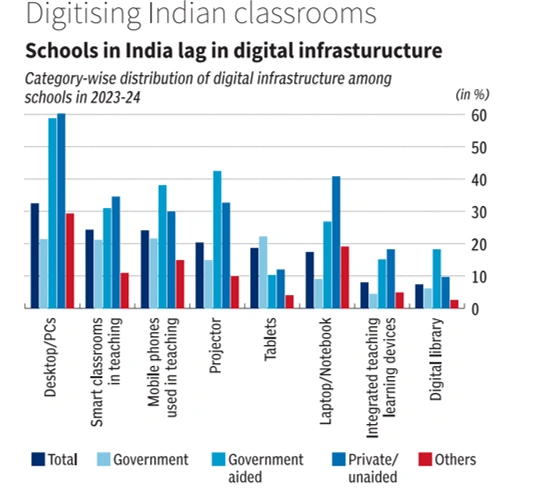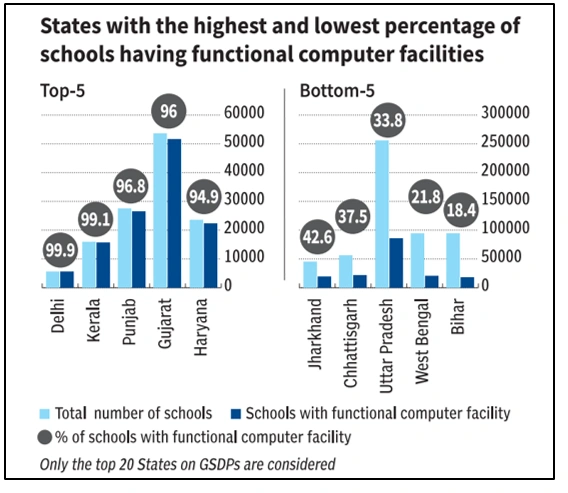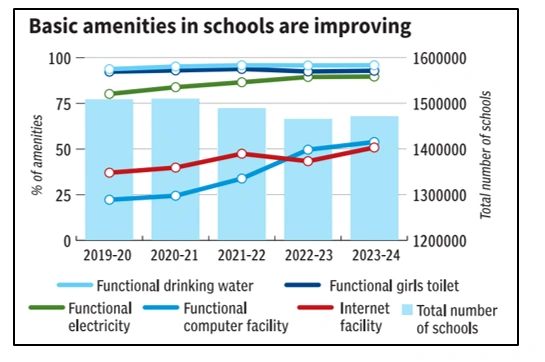Digital Divide in Schools
The data highlights a significant disparity between private and government schools in terms of digital infrastructure.
- Of the 3.3 lakh private unaided schools, 60 per cent are equipped with desktop computers, 40.8 per cent with laptops or notebooks and 34.6 percent have smart classrooms.
- In contrast, only 21.4 percent of the 10.1 lakh government schools have desktops, 22.2 percent have tablets, and 21.2 percent have smart classrooms.

Overall, basic amenities in schools have been improving.
- In 2019-20, 93.8 percent of schools in India had functional drinking water , which increased to 95.9 per cent in 2023-24.
- Similarly, the availability of functional girls’ toilets improved from 92.4 percent to 92.9 percent while access to functional electricity rose significantly from 80.2 percent to 89.7 percent during the same period.
- Availability of functional computer and internet facilities has
also grown over
the past five years, though only in about half of the schools in India.
- Functional computers increased from 37.1 per cent in 2019-20 to 50.9 per cent in 2023-24 while internet access saw a dramatic rise from 22.3 percent to 53.9 percent.
- Among the States, Delhi, Kerala and Punjab have the highest percentage of schools with functional computer facilities , at 99.9 percent, 99.1 percent and 96.8 percent respectively.
- In contrast, Bihar, West Bengal and Uttar Pradesh have the lowest percentages , with only 18.4 percent, 21.8 percent and 33.8 percent of schools equipped with functional computer facilities respectively.


Reasons for the lack of Digital infrastructure in schools
- These include budgetary constraints, frequent power cuts, slow internet speeds, inadequate basic infrastructure and the absence of sustained digital resources.
- Many schools still rely on traditional teaching methods , and there is resistance to change due to a lack of professional development for educators.
- Much of the government and aided schools don’t have adequate budgeting or training of faculty. It requires support on the front of education investment and revamping of campuses.
- What might help is an association with connectivity providers and outsourcing the computer labs in government schools.
- The Oxfam India Inequality Report 2022 highlighted that existing income
inequality, gender divide and caste disparity make the use of digital infrastructure
in schools unviable.
- Digital divide is exacerbated by prohibitive cost of edtech products, which on the market are equivalent to 77.5 percent of the per capita income for its lowest wealth quintile.













